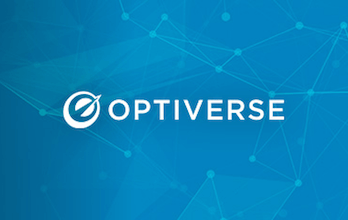
Download our FREE Testing Toolkit for A/B testing ideas, planning worksheets, presentation templates, and more!
Get It NowSocial Proof
What Is Social Proof?
Social proof in a marketing context is evidence that other people have purchased and found value in a product or service offered by a business. Because people are more likely to purchase a product which others are already purchasing (the bandwagon effect), social proof can be a way to increase conversions by showing customers how popular a product or service is.
On the web, social proof can take many forms including customer testimonials & reviews, customer lists, and quantifiable data (“Over 50,000 downloads!”). All of these different tactics help to build trust, convey value, and improve conversions.
Why Is Social Proof Important?
Social proof can be an effective marketing tactic for a number of reasons.
The most basic motivating force behind social proof is the bandwagon effect, which states that people are more likely to engage in an action if other people are doing it. For example, if over two million people have purchased a book and enjoyed it, logic dictates that you are likely to enjoy the book too.
Employing this form of social proof involves showing that a large number of people have purchased a product (“Over 20,000 copies sold!”) or that many people support the business (“Over 1 million satisfied customers!”). Prominently displaying social media follower counts can be another way of conveying social proof. Because numbers like these are often hard to verify and easily faked, the effectiveness of this tactic depends on how much the customer trusts the businesses claims.
Another benefit of social proof is that it can help convey trust. Trust is one of the key factors in converting customers online, because providing a credit card number to an unknown business over the web is a large hurdle for customers to overcome. Showing visitors that a business has many satisfied customers through testimonials and user reviews helps to build trust that a business is legitimate and trustworthy.
Finally, social proof can also be used to convey authority. For example, a buyer may find a testimonial from an expert in the field more convincing than a hundred reviews from average people. Displaying customer logos of big name clients can be another way of demonstrating both social proof and authority. If many of the world’s top companies are using a service, the logic goes, it is likely to be an effective one.
Social proof can tap into customer psychology, build trust & credibility, and lower barriers to making purchases online.
Examples Of Social Proof
Depending on the product or service, there are a number of ways that marketers can show social proof to help boost conversion rates. Some examples include:
- Photos and testimonials from customers
- Company names and logos, particularly from recognizable and well-respected brands
- Customer case studies
- Ratings or feedback from customers
- Research or other statistics
- Seals of approval from well-respected organizations
- Number of followers on social media platforms
- Download and purchase counts
- Listing the number of customers
- Endorsements from celebrities
- Testimonials from industry experts
The types of social proof you display will depend on your industry. For example, ecommerce sites might display number of customers or reviews, while a B2B business might display a list of enterprise customers or testimonials. Media companies can show readership or subscriber figures, while a travel company might show number of bookings booked.
Any impressive-looking, quantifiable metric can serve as social proof, including number of downloads, number of e-mail subscribers, or even number of social shares. The more credible the evidence of your popularity, the better.
Using Social Proof To Increase Conversions
Because social proof is such a powerful psychological factor, it is a great item to test across your site and on your landing pages in order to increase conversions.
Consider incorporating elements of social proof on your key landing pages as part of the value proposition of your product or service. You can also experiment with incorporating social proof into your calls-to-action, for example: “Join our community of 10,000+ marketers.”
An effective way to test different placements of social proof is through A/B testing. In A/B testing, two different versions of the same page are compared against each other and statistical data is used to determine which version of the page has a statistically significant difference in conversion rate.
With A/B testing software such as Optimizely, it’s easy to create variations of your landing pages and start incorporating social proof into your site.
Ready to learn more?

Get your copy of the testing toolkit.
Use the testing toolkit to start or scale your testing program.

Want to stay ahead of the competition?
Help your organization master one of the four key initiatives covered in this webinar series.

Join the community.
Meet Optiverse — a place to explore, learn, and connect around experience optimization.